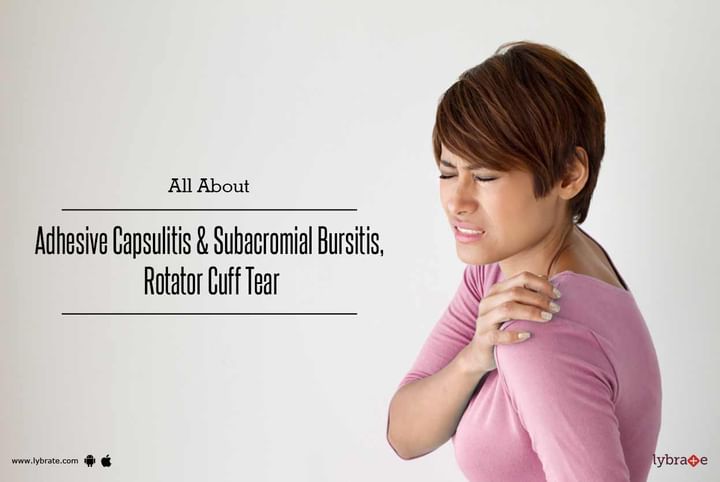All About Adhesive Capsulitis and Subacromial Bursitis, Rotator Cuff Tear
Adhesive capsulitis: an overview
If you are taken aback by the very mention of this condition, you must know this is something you face every now and then. The problem is not too serious until it persists and hence people do not bother to look up terrifying medical terms for the case. Adhesive capsulitis or frozen shoulder is a condition that could arise from a host of reasons. It is usually characterized by a marked stiffness in and around the shoulder blade felt either in the middle of the night, early in the morning or while trying to move a hand close to the end of its reach. Frozen shoulder might become a chronic problem in which case remedying it takes a minimum of one or two years.
Factors leading to Adhesive capsulitis
- This condition is prevalent amongst patients of diabetes.
- Lack of movement of a limb, either of the two hands, due to a fracture or a surgery can result in the same.
- Adhesive capsulitis occurs when the capsule of connective tissues ensconcing the ligaments and bones of your shoulder joint tightens around them hindering free and easy movement.
How is Adhesive Capsulitis Treated?
There are various treatments for adhesive capsulitis. Even though the condition usually gets better on its own, improvement can take two to three years. Over 90% of patients improve with non-surgical treatments, including the following:
- Physical therapy
- Heat
- Corticosteroid injections
- Anti-inflammatory medications
Surgery can be performed for patients who see no improvement after non-surgical measures are taken.
How is subacromial bursitis different from Adhesive capsulitis?
While a frozen shoulder affects your entire shoulder area, subacromial bursitis affects a single point in the shoulder blade. The topmost boney part of the shoulder blade is referred to as the acromion. The acromion is placed above the ball- and- socket joint without touching the bones directly. The subacromial bursa is a soft cushion like thing that prohibits friction between the muscles or tendons of the shoulder joint and the acromion. An irritable subacromial bursa is referred to as subacromial bursitis.
How is Subacromial Bursitis Treated?
Subacromial Bursitis can be treated in a number of ways, including:
- Avoiding activities that aggravate the problem
- Resting the injured area
- Icing the area the day of the injury
- Taking over-the-counter anti-inflammatory medicines
- What do you mean by rotator cuff tear?
Rotator cuff is a group of tendons and muscles located on top of the upper arm bone or humerus. The cuff helps to hold your arm in place allowing easy movement. Acute stress or physical exertion can lead to muscle cramps or might even make the tendons tear apart. Tennis players, swimmers, or people lifting heavy weights are prone to Rotator Cuff Tear. This condition leads to excruciating pain and tenderness in your shoulder blade.
What's the Treatment for a Rotator Cuff Tear?
As bad as these injuries can be, the good news is that many rotator cuff tears heal on their own. You just need to give them a little time. You also should:
- Rest the joint as much as possible. Avoid any movement or activity that hurts. You may need a sling.
- Ice your shoulder two to three times a day to reduce pain and swelling.
- Perform range-of-motion exercises, if your doctor recommends them.
- Consider physical therapy to strengthen the joint.
- Use anti-inflammatory painkillers, or NSAIDS, like Advil, Aleve, or Motrin.
More serious rotator cuff tears require surgery. One procedure is shoulder arthroscopy, usually an outpatient procedure.



+1.svg)
